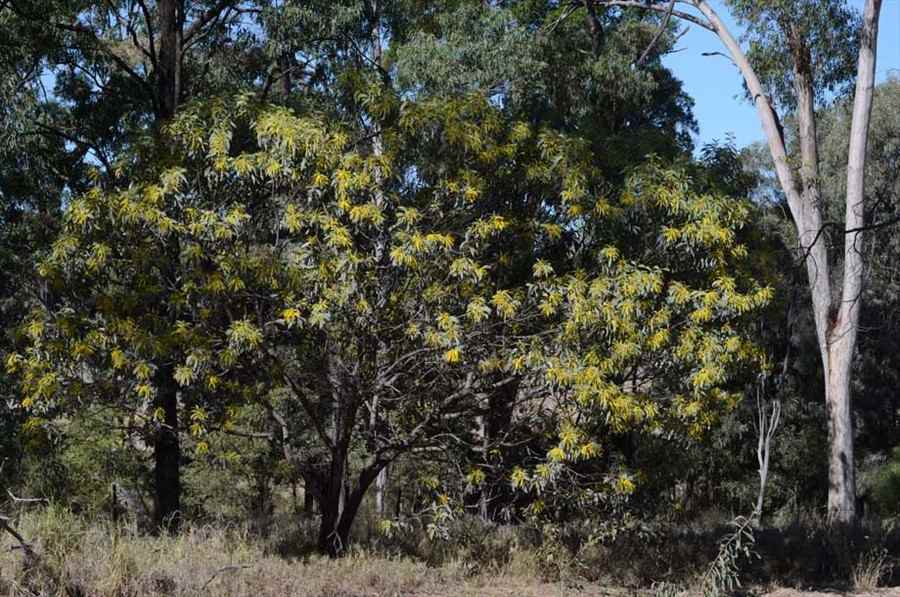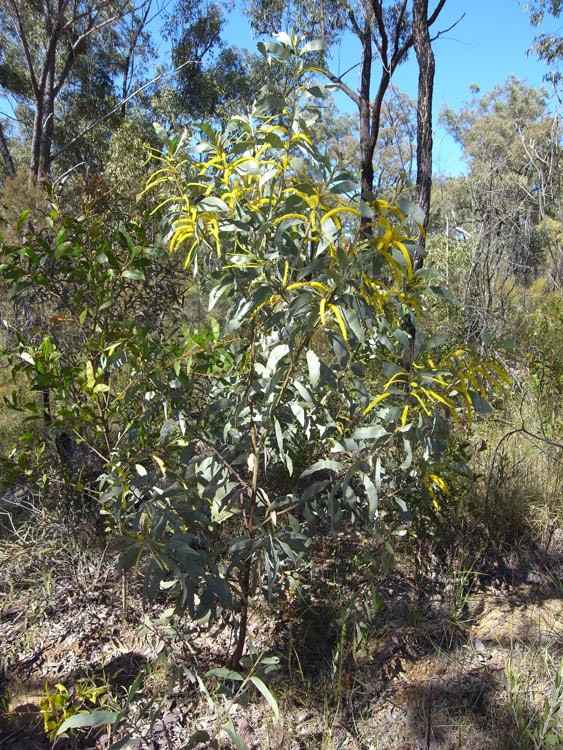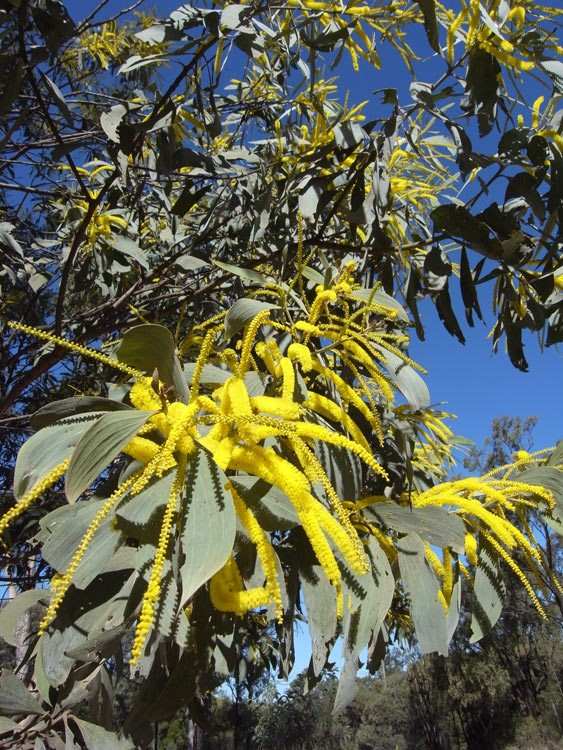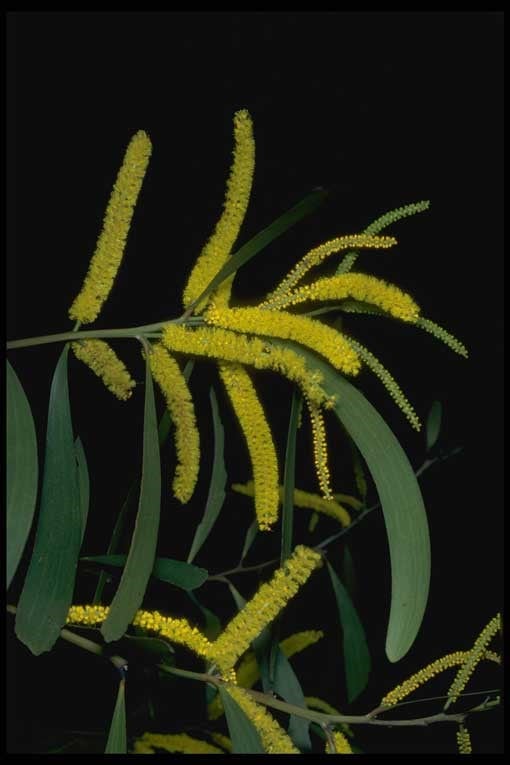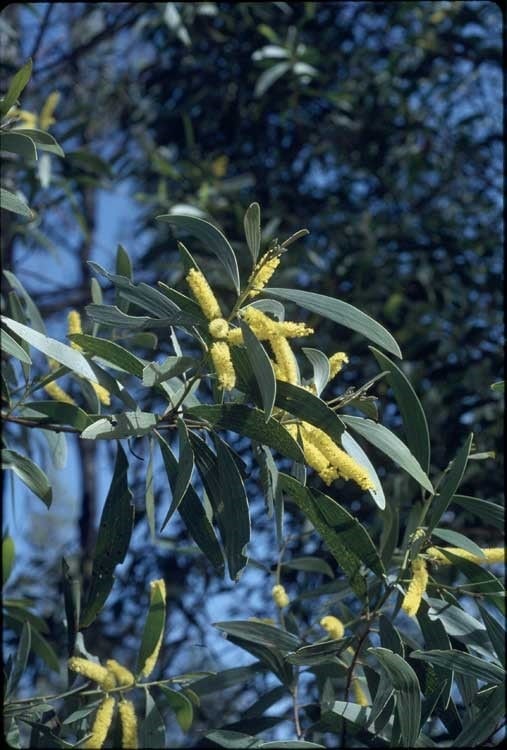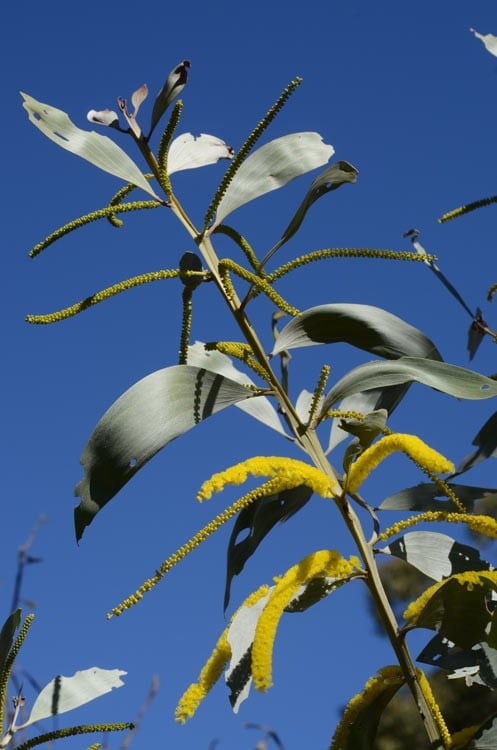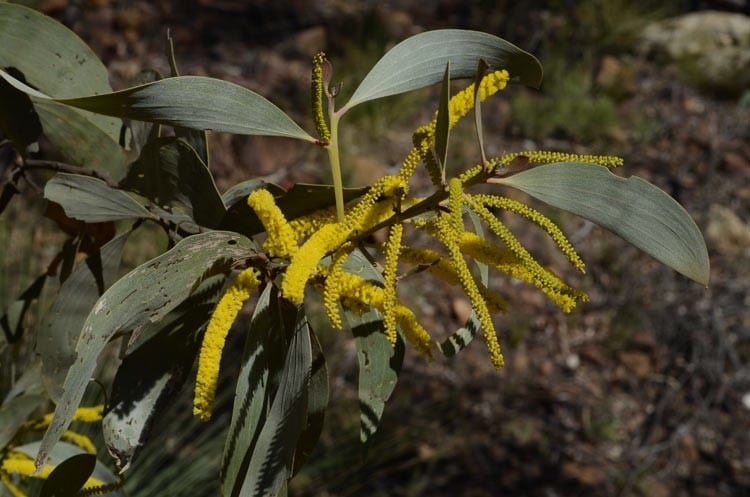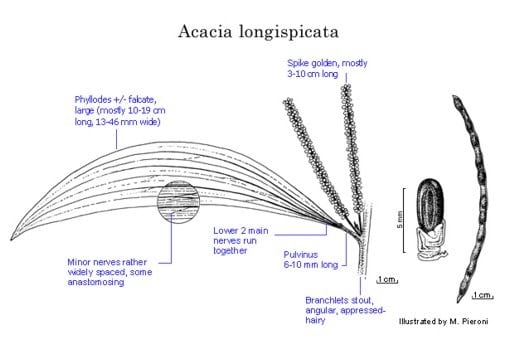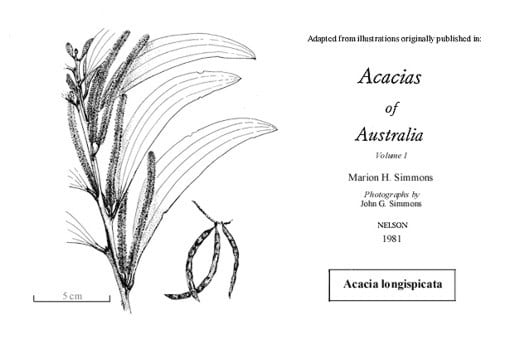Acacia longispicata Benth.
WATTLE
Acacias of Australia
Family
Fabaceae
Distribution
Occurs in Qld N of the Mitchell–Theodore area to about Mount Garnet.
Description
Erect single-stemmed tree to 10 m high. Bark smooth towards top, rough and fibrous at base, dark brownish grey. Branchlets angular, stout, tawny yellow to pale maroon, ±pruinose, with minute, appressed hairs. Phyllodes very narrowly elliptic to elliptic, oblique, flat, sometimes dimidiate but more commonly shallowly to obviously falcate, (8–) 10–19 cm long, 13–46 mm wide, usually larger on juvenile than adult plants, coriaceous, silvery grey to glaucous, occasionally silvery green, usually appressed-puberulous, sometimes glabrous, with 3 main prominent nerves (lower 2 often running together near base and often close to lower margin but not confluent with it) and conspicuous marginal nerves; minor nerves sub-distant (3–5 per mm), some longitudinally anastomosing; gland 1, basal, large, to 1 mm above pulvinus. Spikes 3–10 (–12) cm long, golden, the flowers dense to sub-dense or sometimes ± widely spaced; peduncles 3–10 (–12) mm long. Flowers 5‑merous; calyx 0.5–0.8 mm long, dissected to 1/6, pubescent sometimes only at base; corolla 1.5–1.8 mm long, dissected to c. 1/2, glabrous; ovary densely pubescent. Pods slightly moniliform, curved, twisted, 3–11.8 cm long, 2.5–3.5 mm wide, thinly crustaceous, occasionally slightly longitudinally ridged over seeds, glabrous, dark brown. Seeds longitudinal, 2.5–4.5 mm long, dark brown; areole almost closed (further material needed); aril yellow.
Phenology
Flowers June–Aug. in northern populations, late July–Sept. in the south.
Habitat
Grows as scattered trees in eucalypt woodland or open forest, in sandy soils or red earths, occasionally in skeletal soils, often on hillsides; dense pure stands common on roadsides (especially in the Taroom–Theodore area).
Specimens
Qld: c. 131 km S of Charters Towers turnoff, Hughenden–Mt Garnet road, P.D.Hind 1061 & C.K.Ingram (CANB, MEL, NSW, PERTH, TL); Lonesome Natl Park, R.Johnstone 724 & S.Davies (BRI, NSW); 11 miles [17.6 km] N of Mt Sturgeon, I.V.Newman 508 (NSW); between Theodore and Taroom, L.Pedley 4161 (BRI, NSW).
Notes
Acacia longispicata is member of the taxonomically complex ‘A. cunninghamii group’ (see A. concurrens) that includes, among other species, A. concurrens, A. crassa, A. leiocalyx and A. tingoorensis (which was treated A. longispicata subsp. velutina in Fl. Australia 11B: 165–166, 2001). According to L.Pedley, Austrobaileya 1: 177 (1978) A. longispicata is usually easily identified by its large silvery phyllodes and long spikes, but there is a fair range of variation. Care is often needed not to overlook the minute, appressed branchlet hairs.
FOA Reference
Data derived from Flora of Australia Volumes 11A (2001), 11B (2001) and 12 (1998), products of ABRS, ©Commonwealth of Australia
Author
Dr M.D.Tindale and Dr P.G.Kodela with the assistance of M.Bedward, S.J.Davies, C.Herscovitch, D.A.Keith and/or D.A.Morrison
Edited by B.R.Maslin
This identification key and fact sheets are available as a mobile application:
URL: https://apps.lucidcentral.org/wattle/
© Copyright 2018. All rights reserved.


